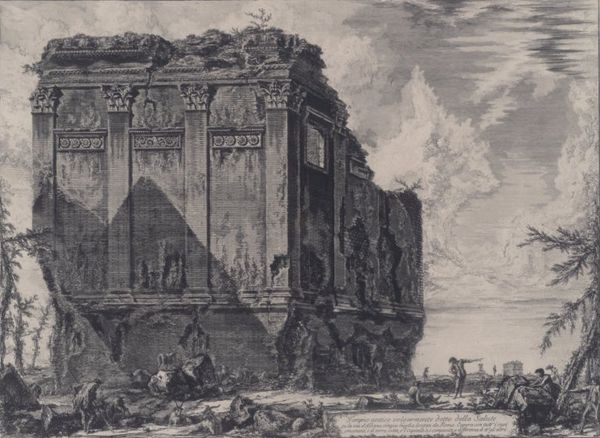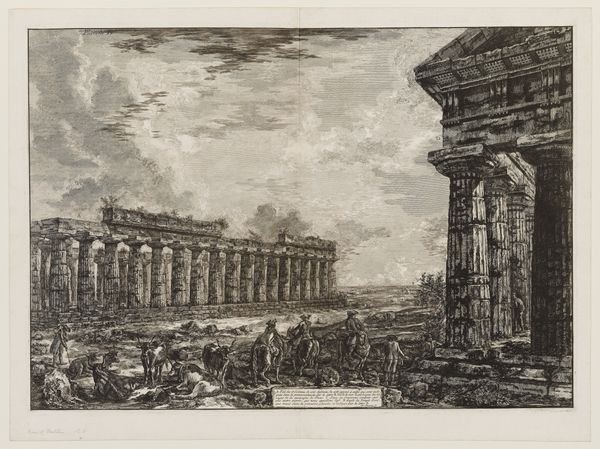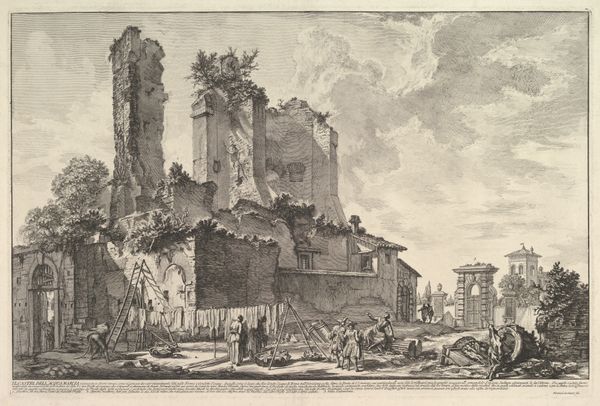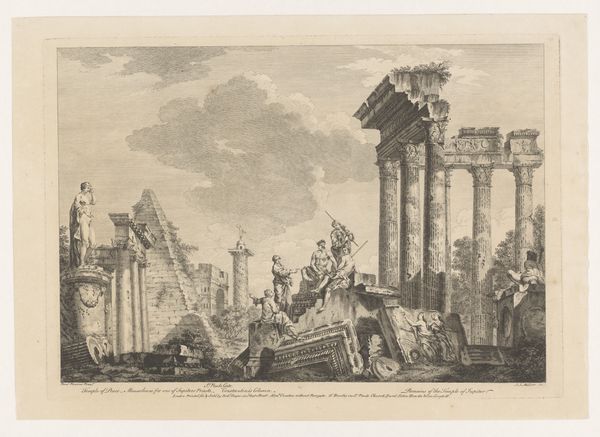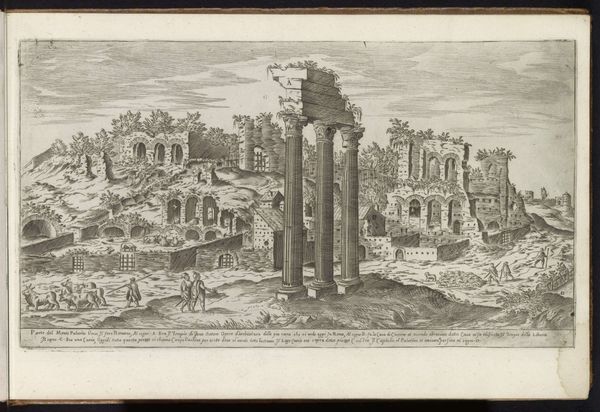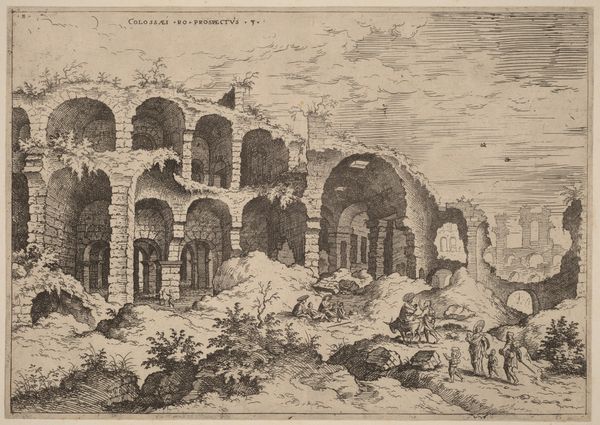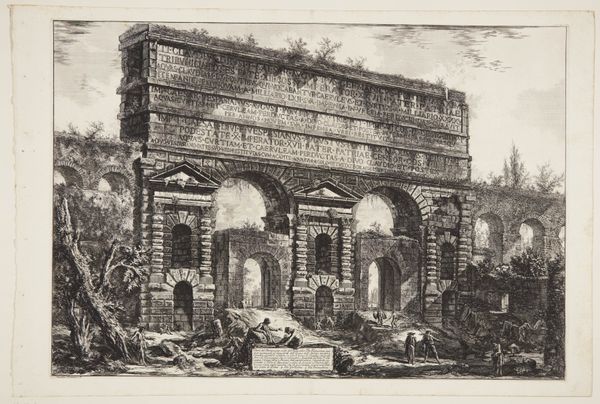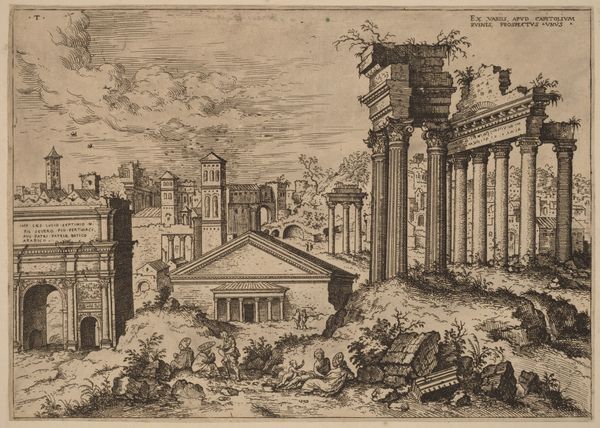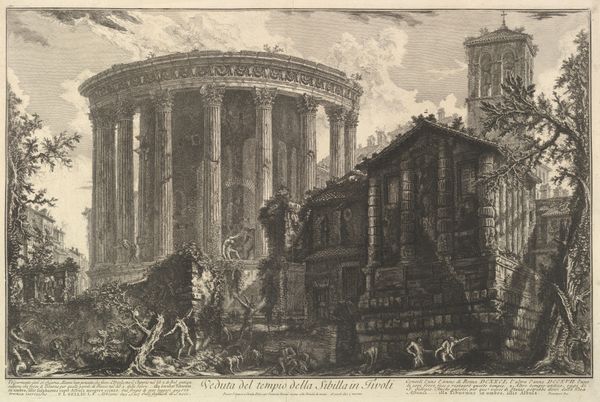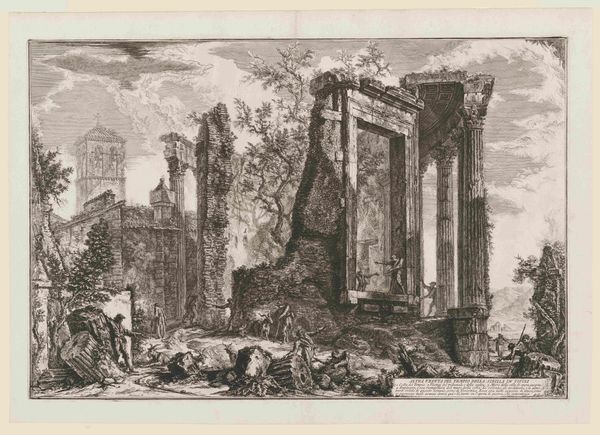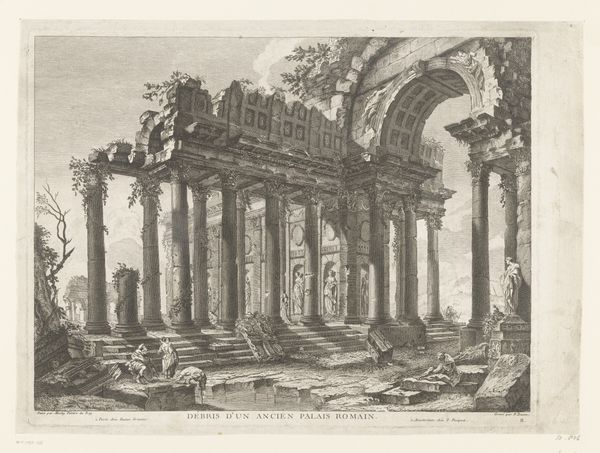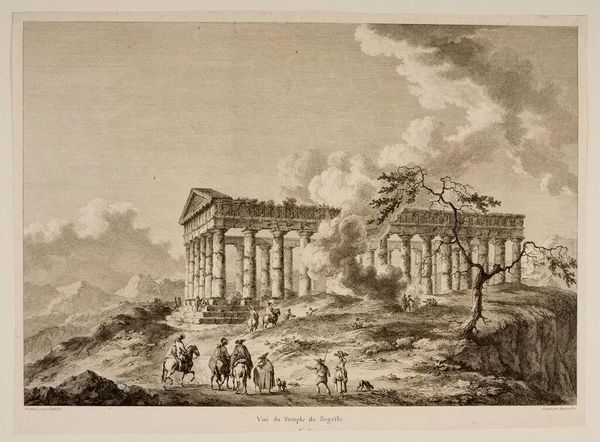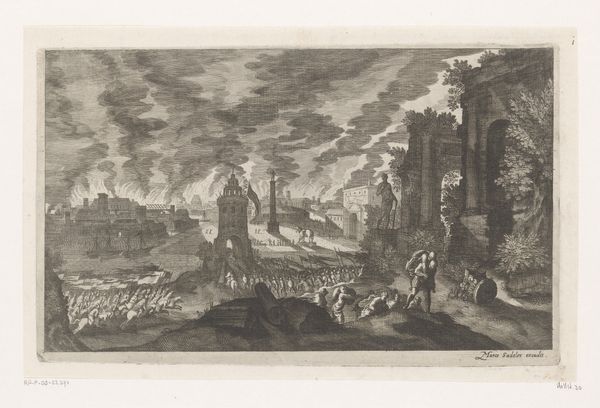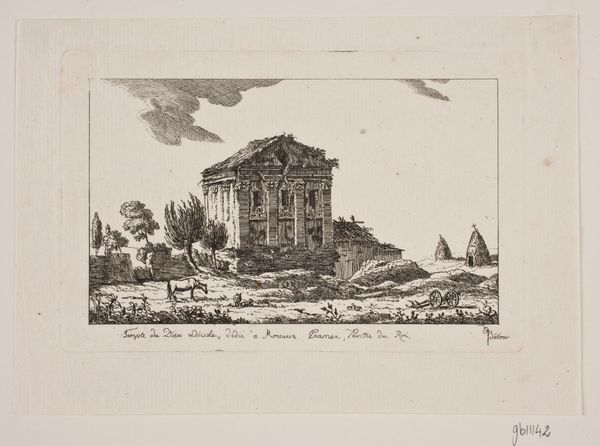
The so-called Temple of Salus, on the road to Albano (Tempio antico volgarmente detto della Salute) 1758 - 1768
0:00
0:00
Copyright: Public Domain
Curator: This is Giovanni Battista Piranesi's "The so-called Temple of Salus, on the road to Albano," an etching and engraving from around 1758-1768. It’s currently held at the Metropolitan Museum of Art. Editor: What strikes me immediately is the palpable sense of decay and neglect. Look at how the building is crumbling. You can almost feel the weight of centuries bearing down. Curator: Piranesi was fascinated by ruins, seeing in them a grandeur that surpassed even the most perfectly preserved classical structures. Notice how the 'Temple of Salus,' though dilapidated, still commands attention, an assertion of historical significance. The figures in the foreground underscore that sense of scale. Editor: And what were its original materials? Stone, brick, definitely. I wonder what processes led to its degradation, and how that decay itself might contribute a kind of sublime beauty. Curator: The temple’s symbolic associations are tied to the concept of 'Salus' – safety, well-being, health. It evokes ideas about societal stability and the transience of human achievements. Perhaps that is what's creating that sense of awe that you're referring to. Editor: Right, how what once served an essential social function is now just material debris. Its symbolic power rests solely in the image, in our acts of observation, of reconstruction in our own minds. Is that not somewhat cynical? Curator: Perhaps, but consider that even in ruins, the 'Temple' retains a capacity to evoke powerful emotions and reflections. It reminds us of the cyclical nature of civilizations and invites meditation. Editor: It's an elegy cast in stone and etched into paper, using those material components to explore a kind of material futility. That's how Piranesi communicates on an essential human level about the world and the built environment that surrounds him and us. Curator: Exactly. The image encapsulates ideas of memory and history so potently and shows us how the power of symbols remains relevant even when their original contexts fade. Editor: A compelling visual document, that reminds us about art’s capability of conveying deep historical realities. I've learned quite a lot by exploring this piece!
Comments
No comments
Be the first to comment and join the conversation on the ultimate creative platform.
